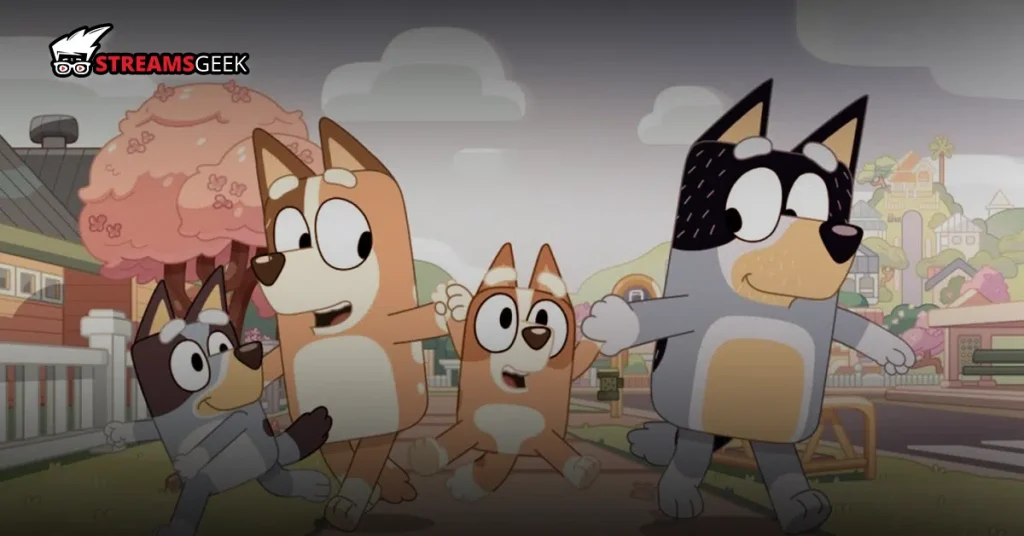“Bluey,” the beloved Australian animated series, has captured the hearts of children and parents alike with its heartwarming stories and relatable characters. In this blog post, we delve into the rich themes of childhood development presented in “Bluey Season 3.” Join us as we explore how the show portrays various stages of growth, highlights important milestones, and addresses challenges faced by children. Discover the impact of these themes on young viewers and their families, as well as the valuable life lessons imparted through each episode.
How does “Bluey” portray the various stages of childhood development in its episodes?
“Bluey” masterfully captures the essence of childhood development through its storytelling. The series portrays the different stages of growth, from the early years to the pre-adolescent phase. Each episode focuses on a specific aspect of a child’s development, such as independence, social skills, and emotional intelligence. Through relatable situations and endearing characters, “Bluey” provides young viewers with a window into their own experiences and challenges.
Read More: Outer Banks Season 4: Predictions, Character Development, and Themes
Discuss specific episodes that highlight important milestones or challenges in a child’s growth.
Throughout “Bluey Season 3,” several episodes stand out for their exploration of significant milestones and challenges in a child’s journey. For instance, in the episode “The Pool,” Bluey learns the importance of facing fears and building confidence. Another episode, “The Sleepover,” delves into the complexities of friendship and navigating new social dynamics. By highlighting these key moments, “Bluey” encourages children to reflect on their own experiences and find comfort in knowing they are not alone.
Analyze the impact of these themes on young viewers and their families.
The themes presented in “Bluey Season 3” have a profound impact on young viewers and their families. By addressing real-life challenges and emotions, the show provides a platform for children to develop empathy, resilience, and problem-solving skills. Parents also benefit from the show’s depiction of family dynamics, which fosters discussions and strengthens the parent-child bond. “Bluey” offers families a shared experience that promotes open communication, understanding, and growth.
The Magic of Playtime: Examining the Importance of Play in ‘Bluey Season 3’
Play is at the core of “Bluey’s” storytelling, and Season 3 continues to emphasize its significance in children’s lives. Through imaginative play, outdoor adventures, and creative role-playing, the show showcases the power of play in promoting cognitive, physical, and emotional development. It encourages children to explore their imagination, problem-solve, and develop essential social skills. By celebrating the magic of playtime, “Bluey” inspires young viewers to engage in active and imaginative play, fostering their creativity and laying the foundation for a lifetime of learning.
Discuss the different types of play showcased in the series and their benefits.
“Bluey” presents a wide range of play experiences, each with its own benefits. From imaginative play, where Bluey and her friends embark on thrilling make-believe adventures, to constructive play, where they build forts and create elaborate structures, the show demonstrates the various ways children can engage with their environment. These different types of play foster creativity, problem-solving, teamwork, and fine motor skills. By showcasing the diverse possibilities of play, “Bluey” encourages children to explore, experiment, and discover their own interests and abilities.
Explore how the show encourages imaginative play and its positive influence on children’s creativity and problem-solving skills.
Imagination is a powerful tool for children, and “Bluey” celebrates its transformative potential. Through Bluey and Bingo’s vivid imagination, the show invites young viewers to join them on imaginative journeys, whether they’re exploring uncharted territories in their backyard or creating a fantastical world with their toys. This encouragement of imaginative play sparks creativity, problem-solving, and critical thinking. By witnessing Bluey’s imaginative escapades, children learn to think outside the box, find innovative solutions, and embrace their own unique perspectives.
Conclusion
“Bluey Season 3” continues to captivate young audiences with its thoughtful portrayal of childhood development, the power of play, and the dynamics of family life. By addressing emotions, fostering inclusivity, and celebrating the joys of imaginative play, the series offers valuable lessons and a shared experience for children and their families. As fans eagerly anticipate the upcoming season, let us celebrate the impact of “Bluey” on children’s growth, learning, and happiness.



